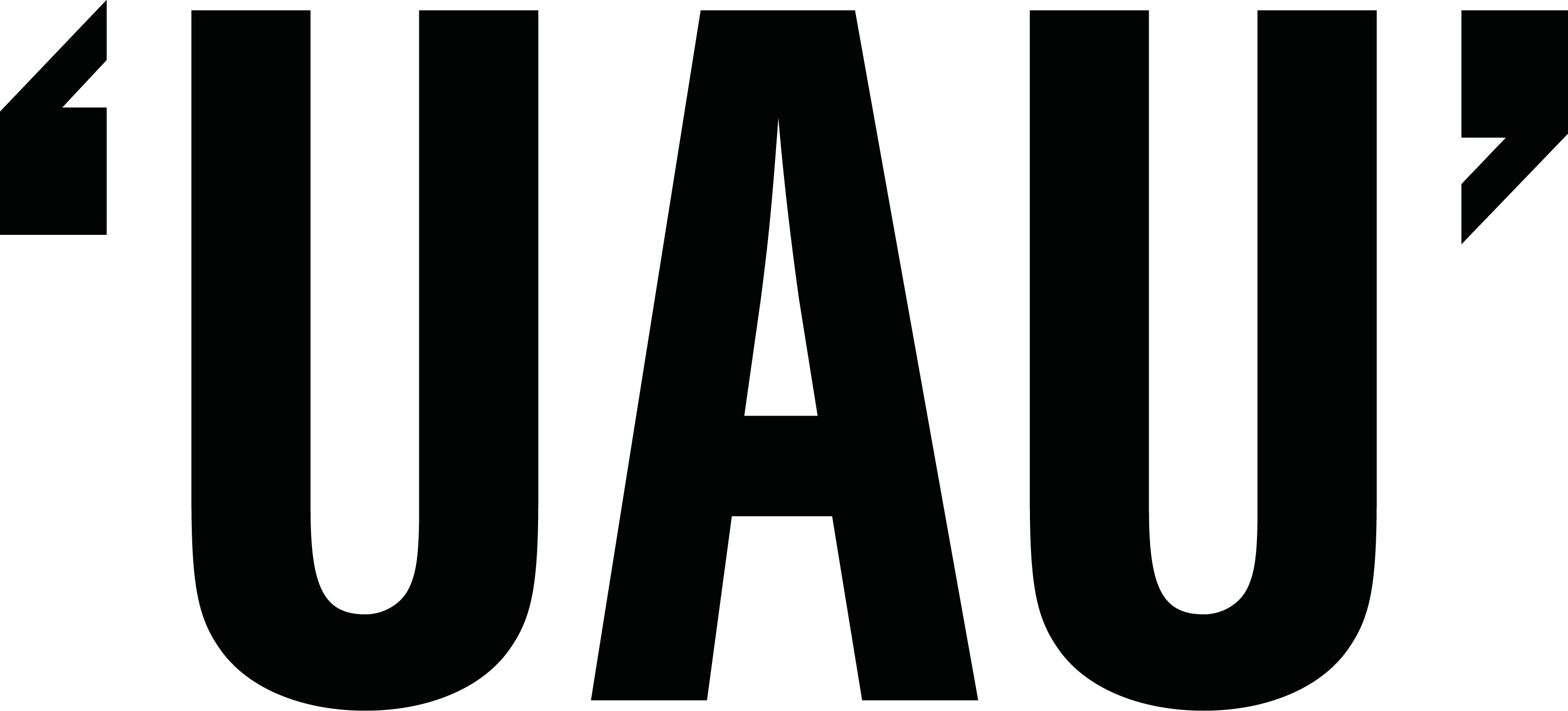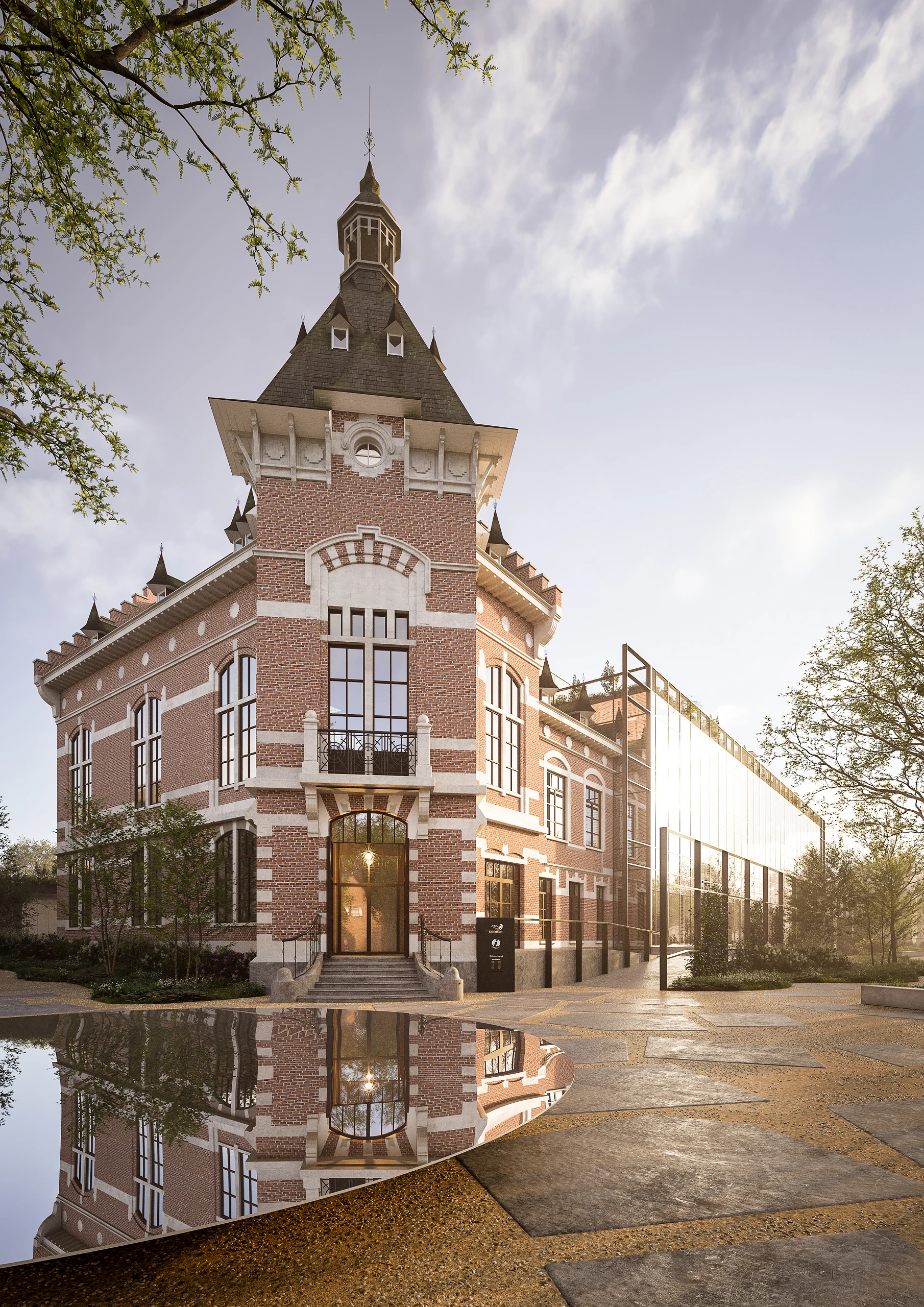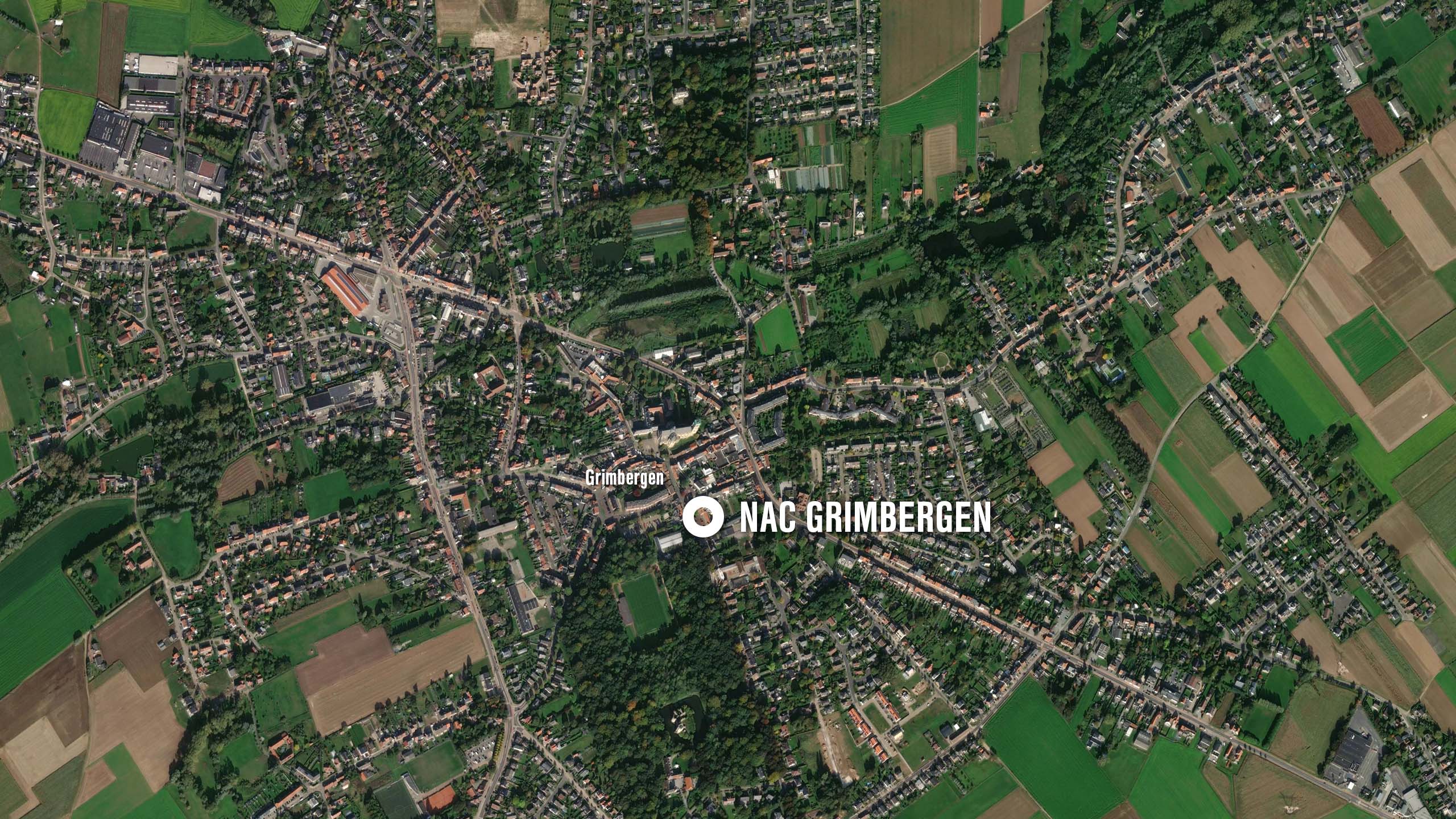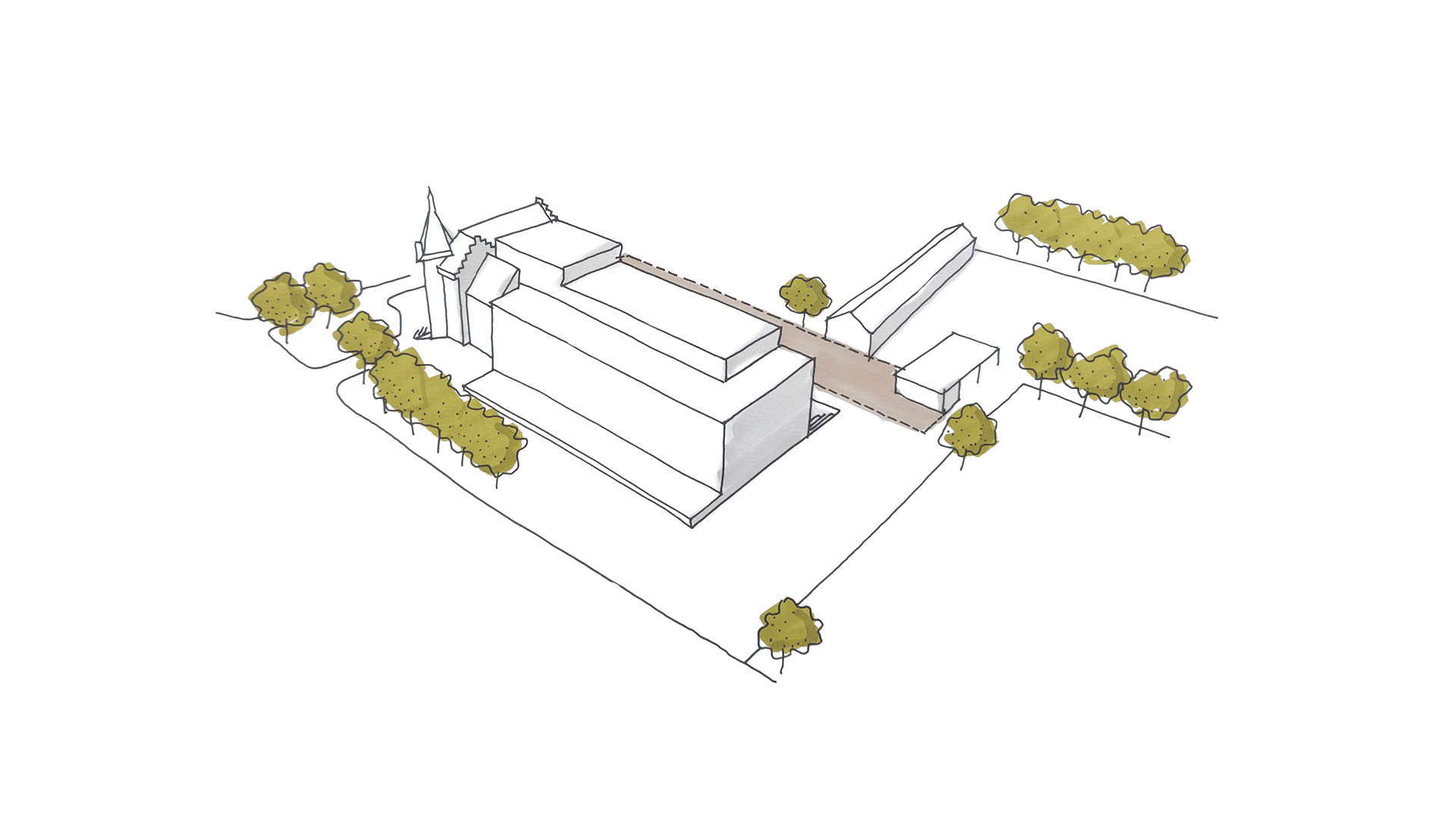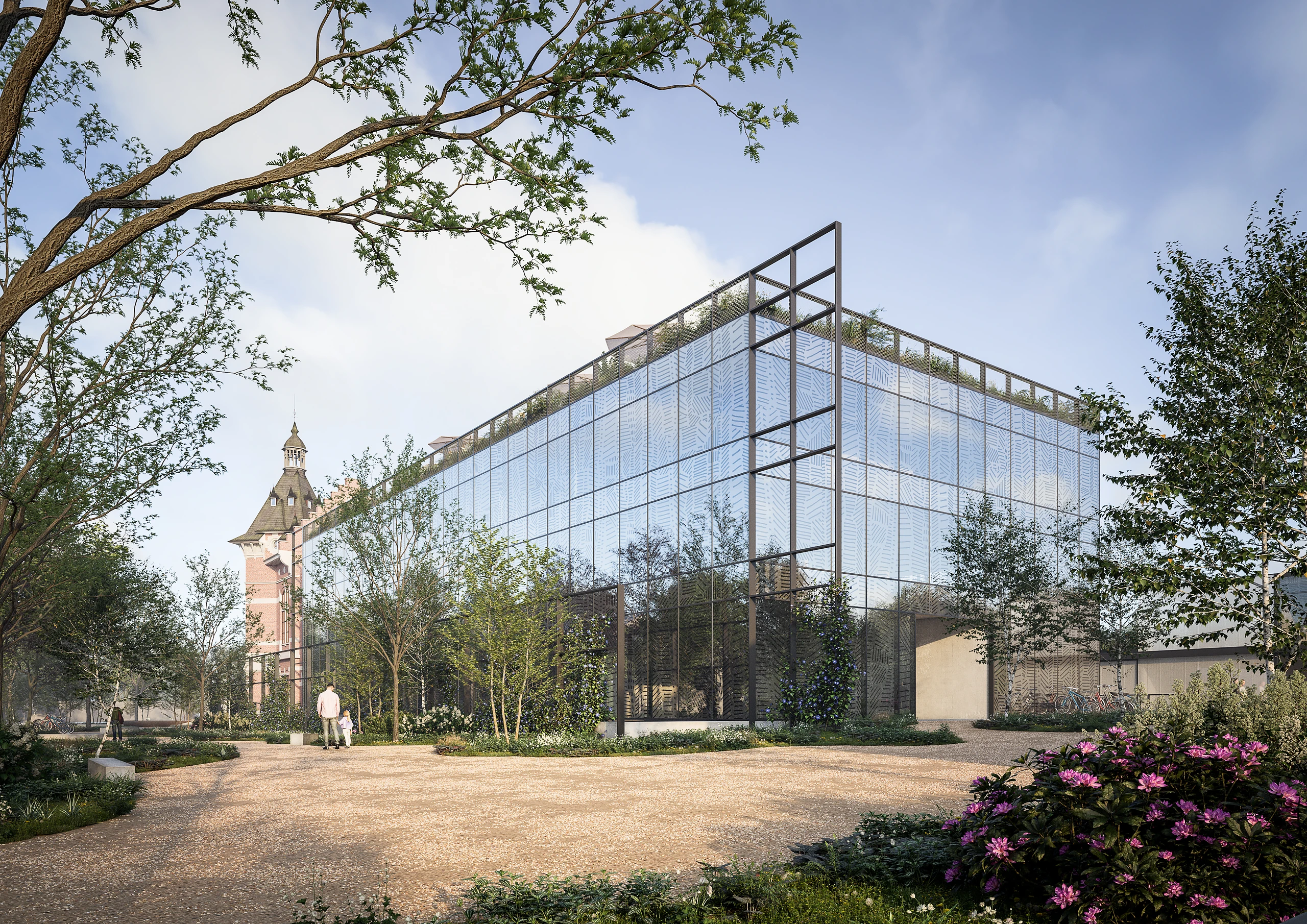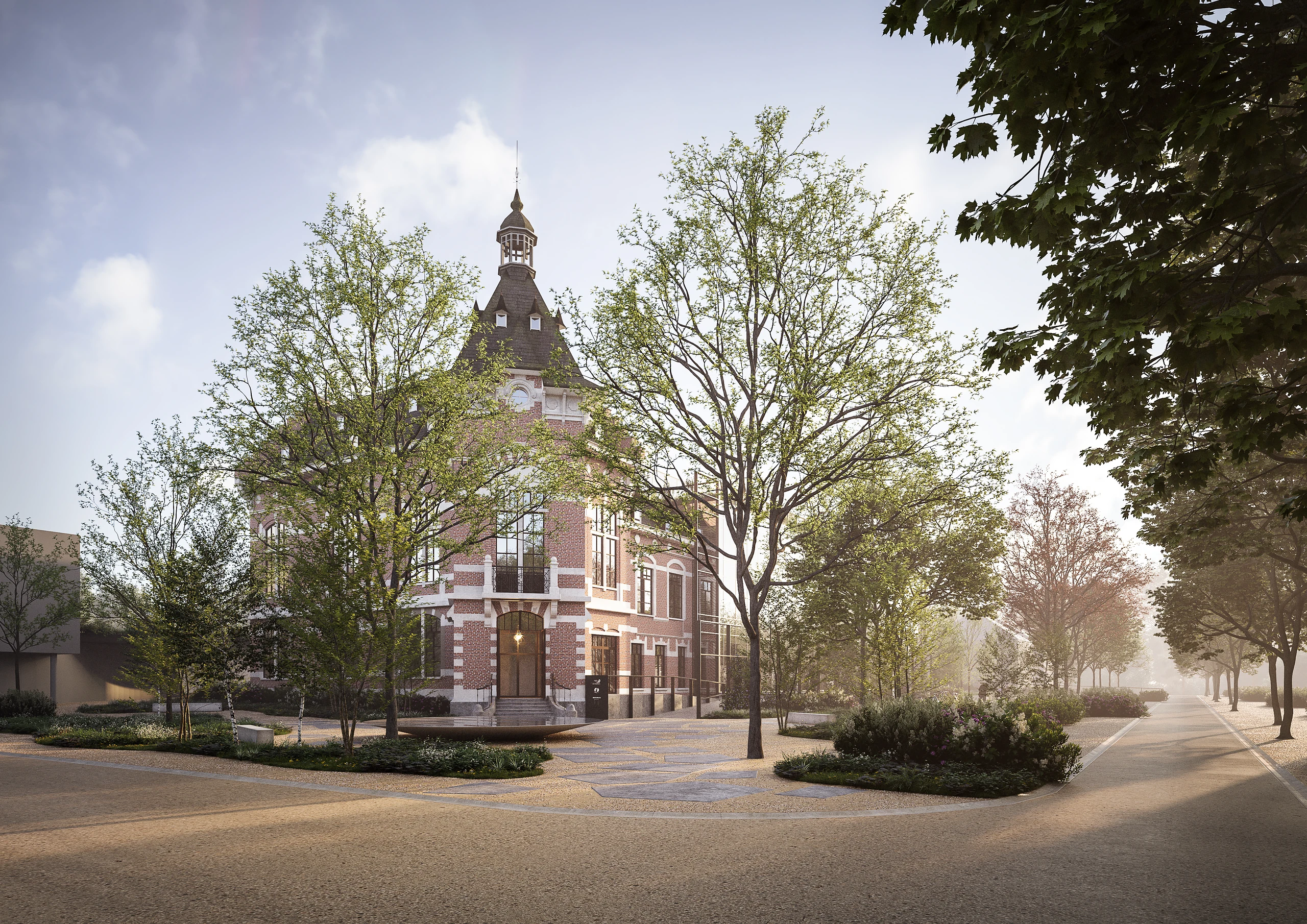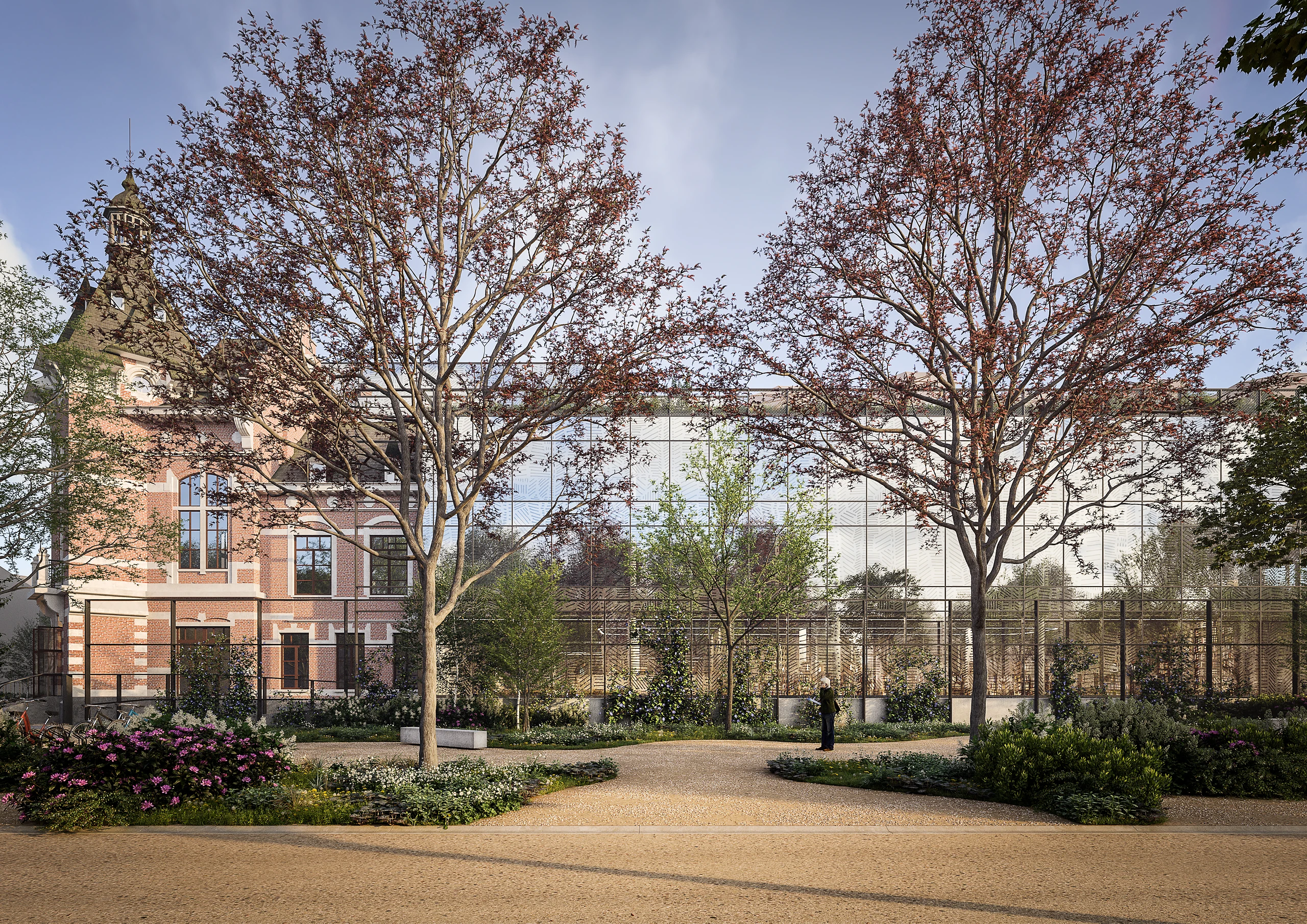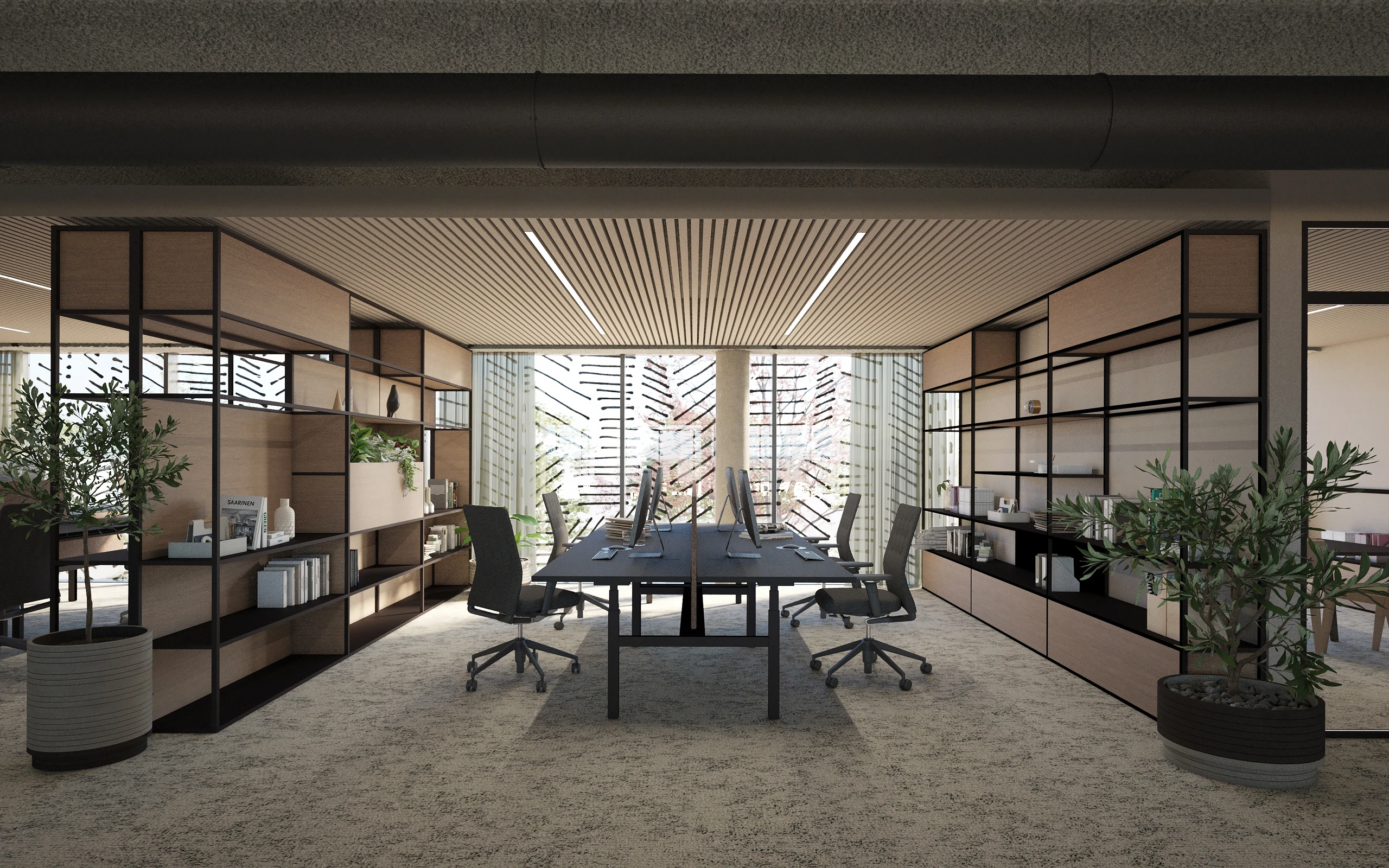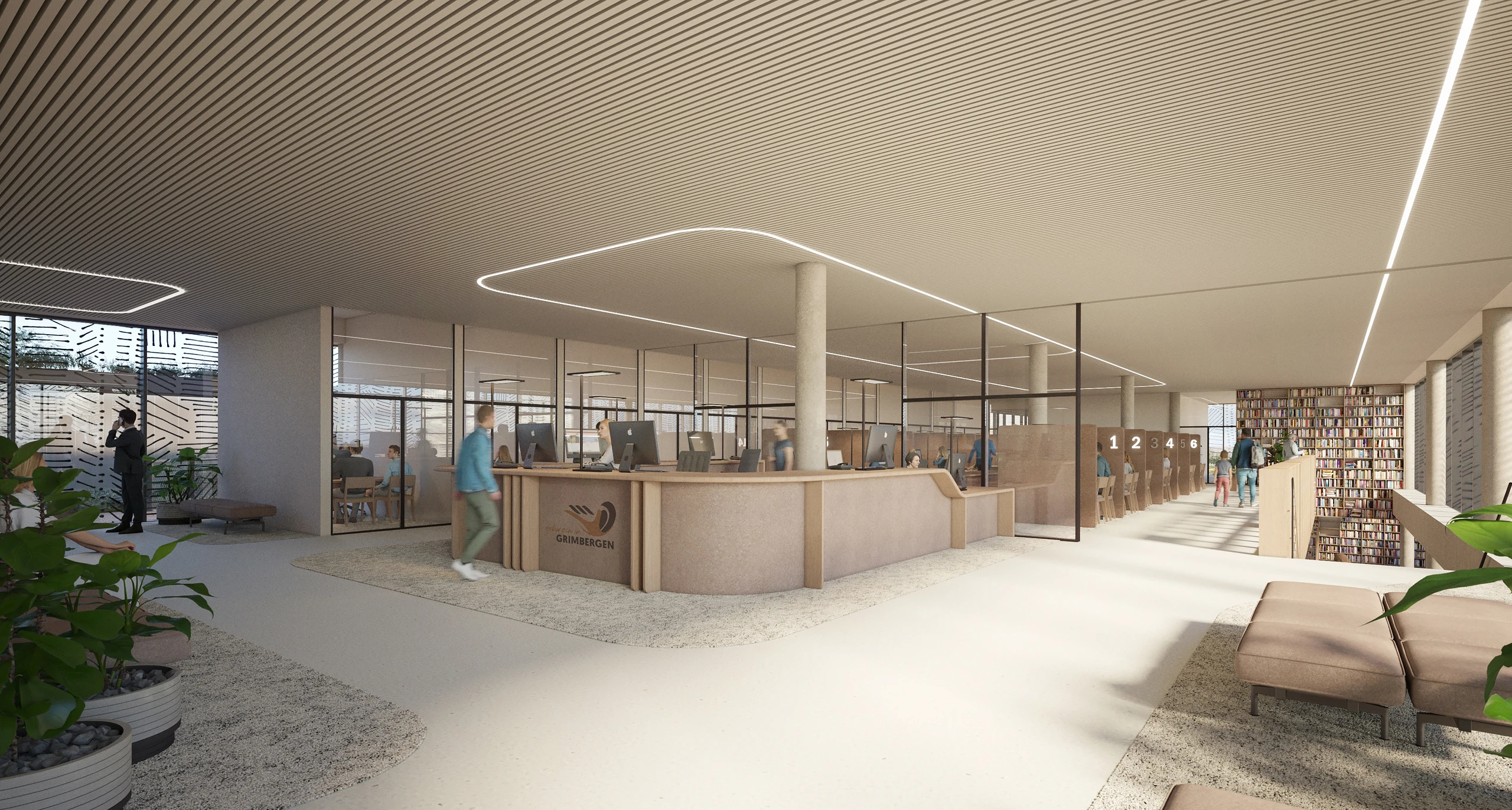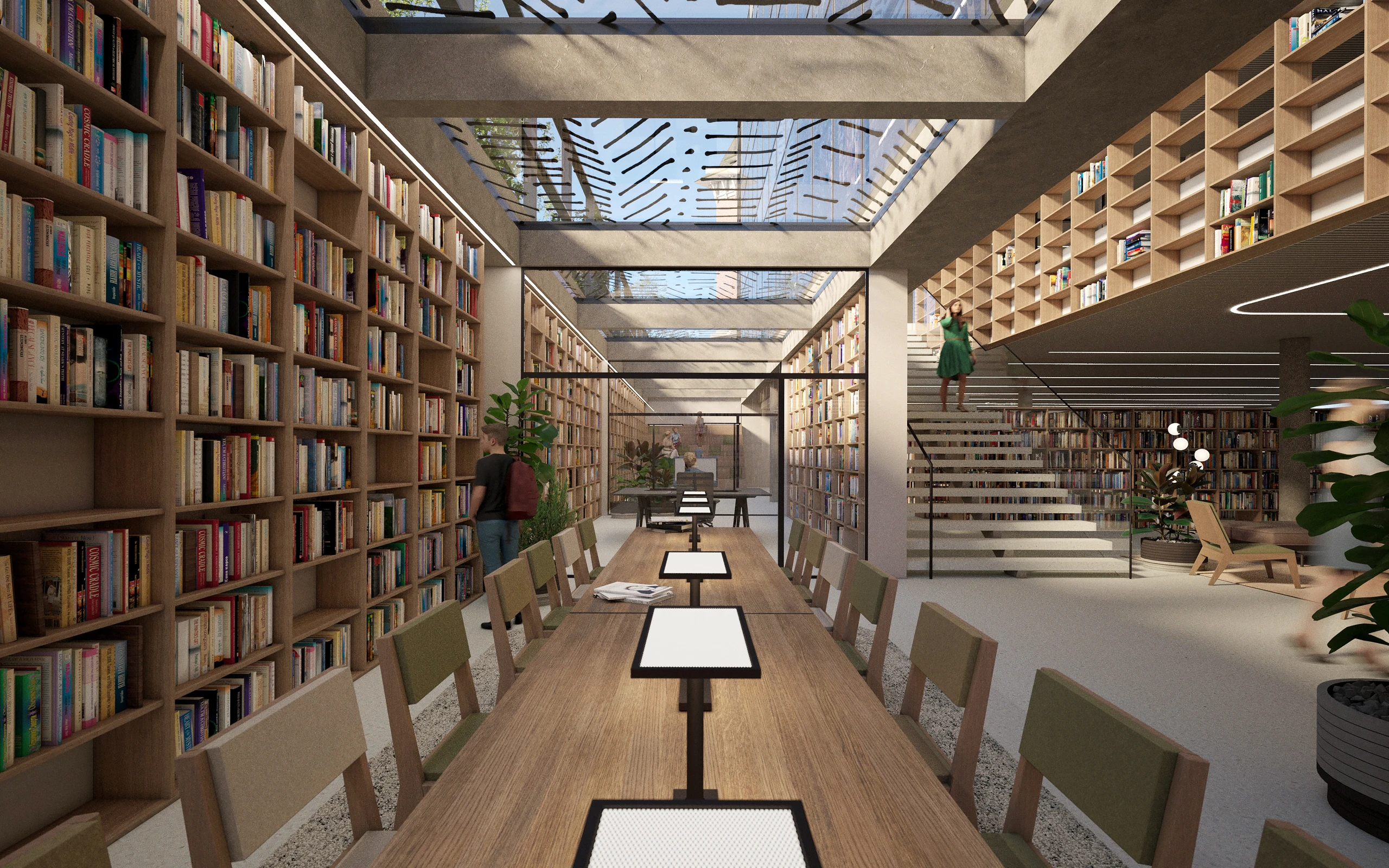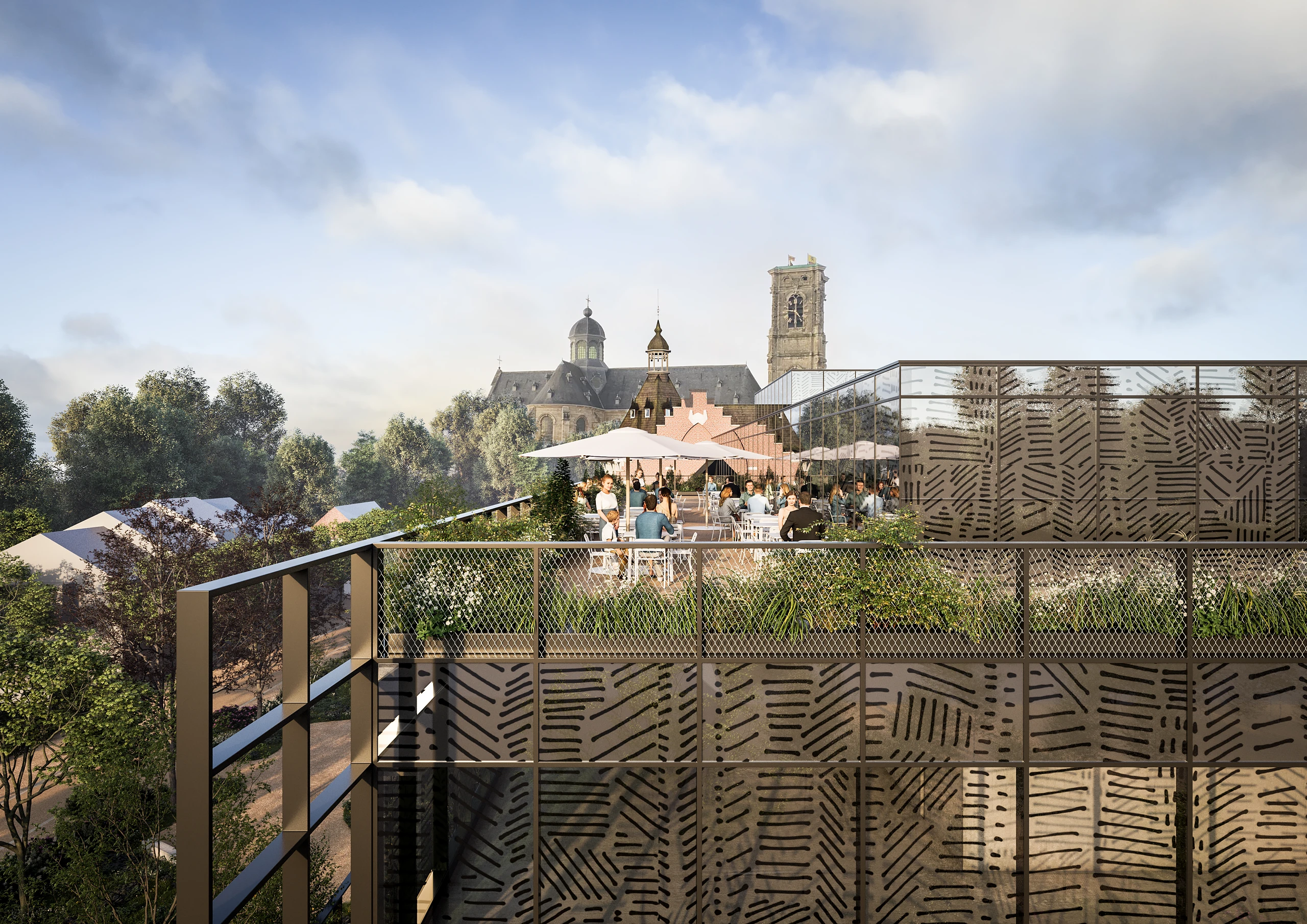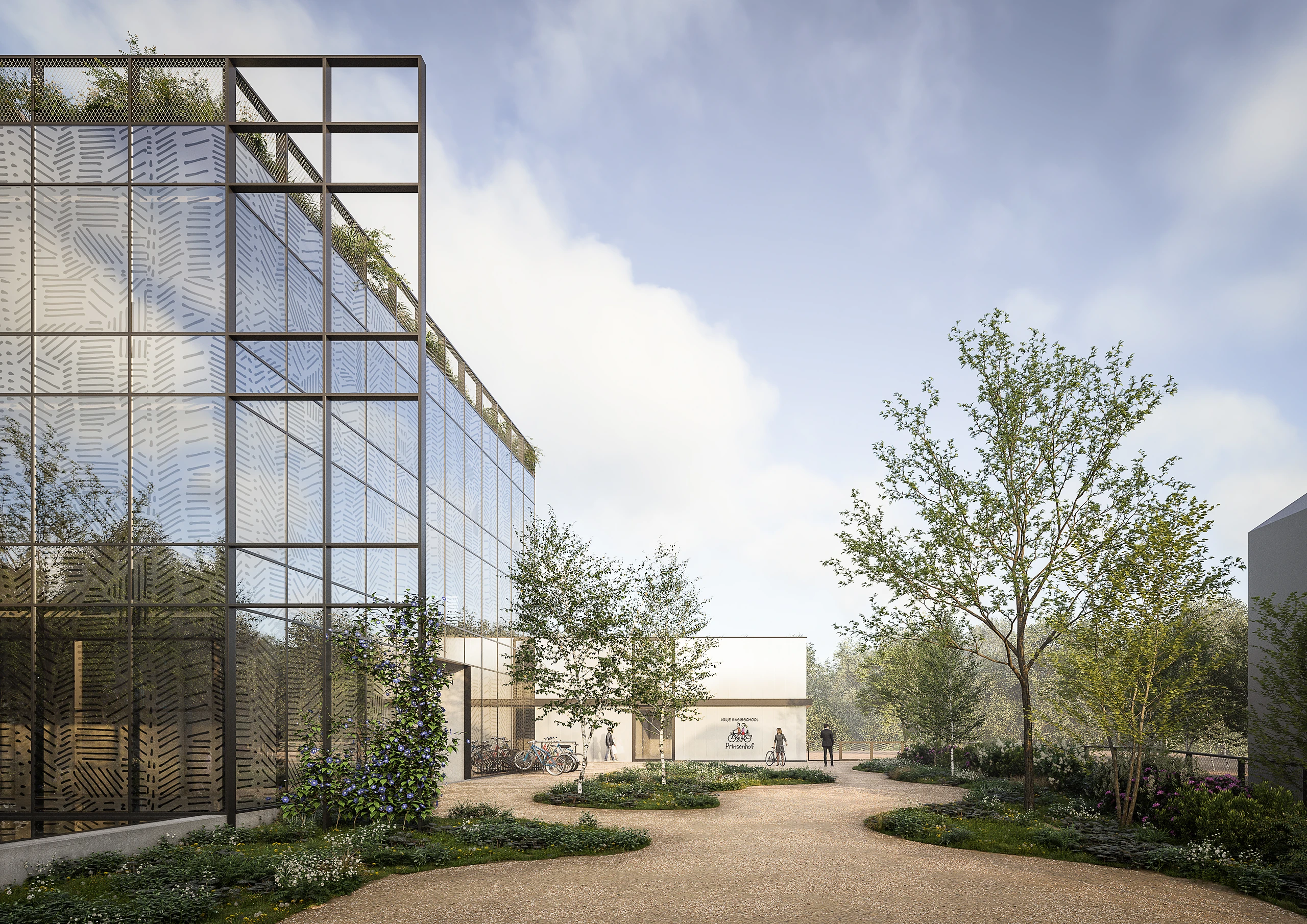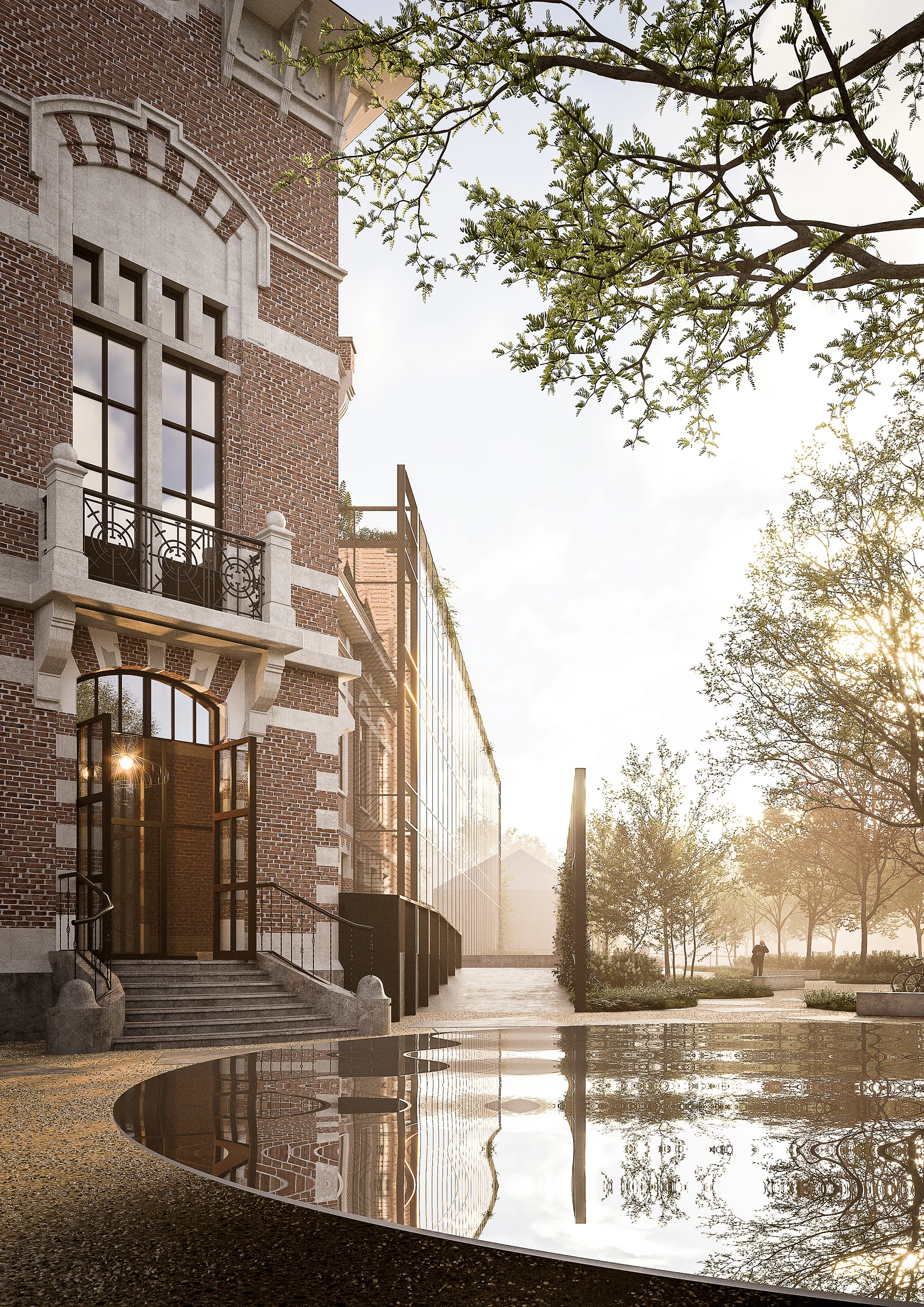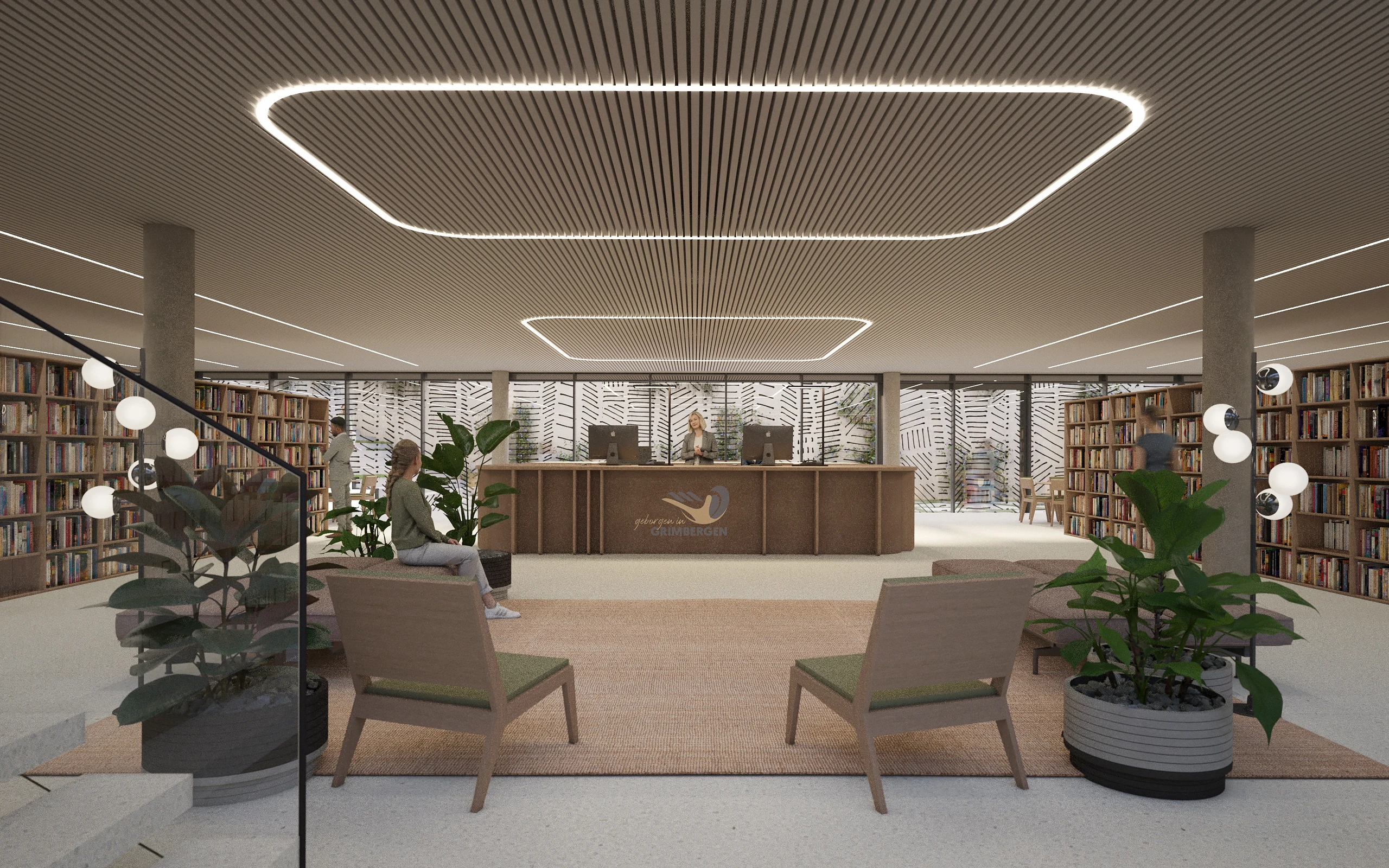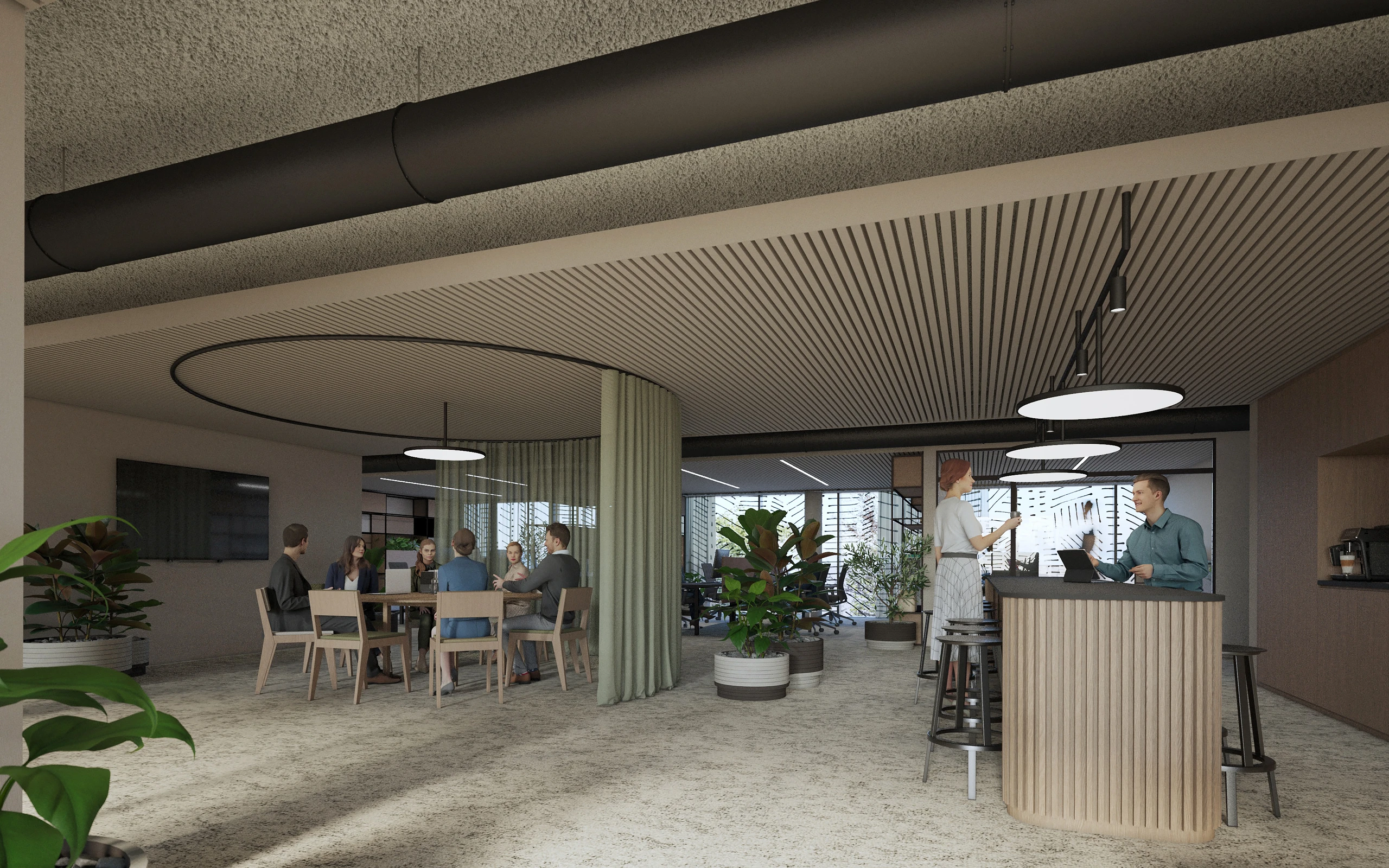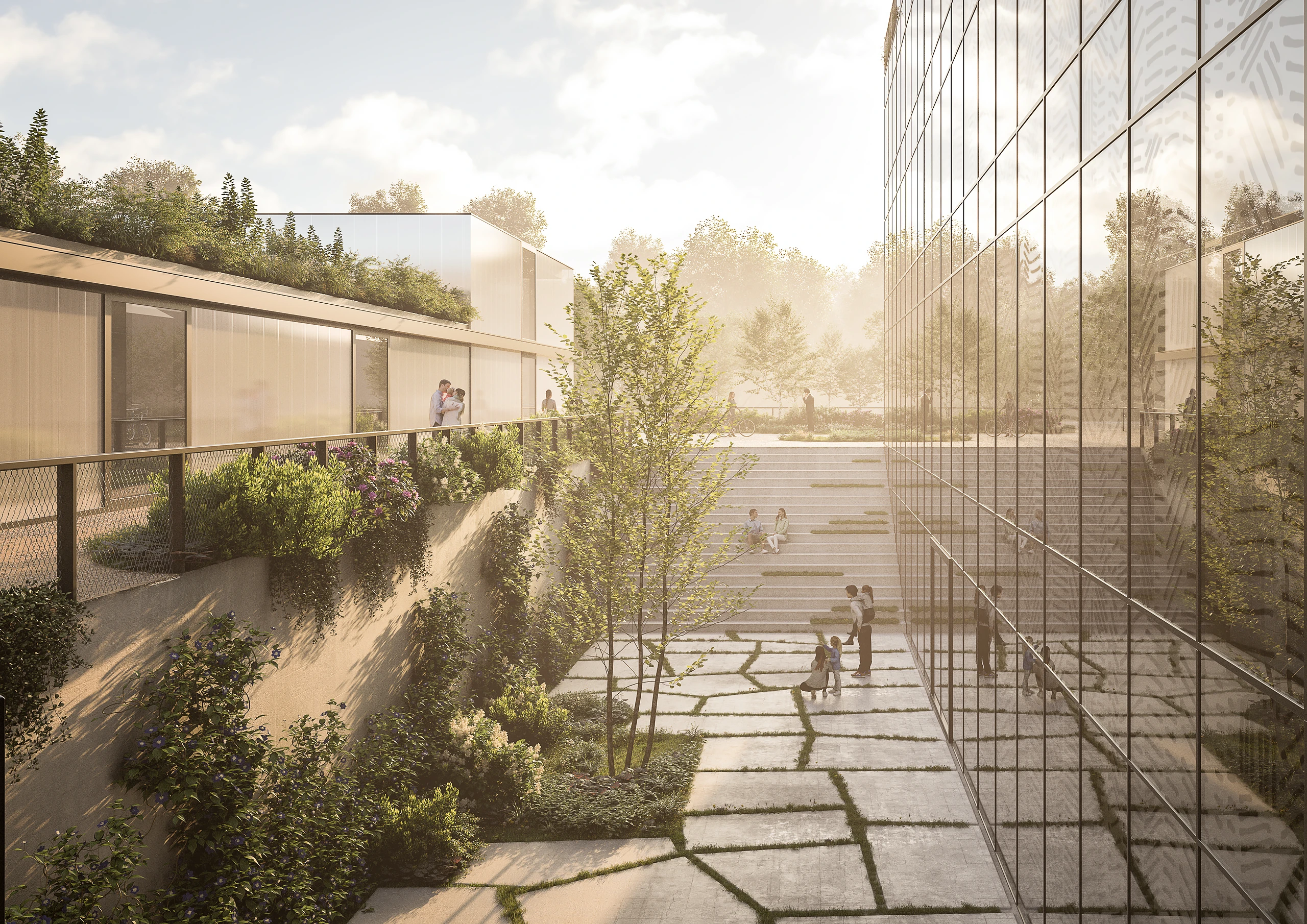- Location: Grimbergen, Belgium
- Program: City Hall
- Area: 5.660 m²
- Year: 2021
- Status: Competition
Our proposal for a new city hall of Grimbergen aims to deliver a high-quality building that blends architectural distinction, historical respect, and energy efficiency through advanced sustainable techniques. The design prioritizes inclusivity and equality, reflecting Grimbergen’s commitment to societal, spatial planning, and sustainability standards.
The New Administrative Center (NAC) is envisioned as both a collaborative workplace and a community hub, fostering connections in the post-pandemic era. It will create a welcoming environment for employees, residents, and visitors, aligning with the municipality’s slogan, “Geborgen in Grimbergen.” Centralizing city services on the former boys’ school site, adjacent to the historic board house, the project involves demolishing Building 2000 to expand the school and develop high-quality public spaces.
Rational considerations highlight that Building 2000 does not meet current fire standards, making renovation complex and costly. A new building will ensure continuous service with minimal disruption, providing a flexible, sustainable design that reduces long-term maintenance and energy costs. The demolition of Building 2000 will maximize light, space, and quality for all offices, enhancing the work environment and benefiting neighboring plots. Utilizing the existing basement for the new school foundation will reduce costs and improve economic efficiency.
Emotionally, the project will create public spaces that make the town hall feel like a home for everyone. Integrating school, town hall, and library functions, it promotes interaction and community spirit. The design respects the historic village center and provides equal, high-quality workspaces, avoiding a mix of styles and ensuring a harmonious structure.
In summary, this project addresses both rational and emotional needs, creating a sustainable, inclusive, and community-oriented building that meets Grimbergen’s current and future needs.
